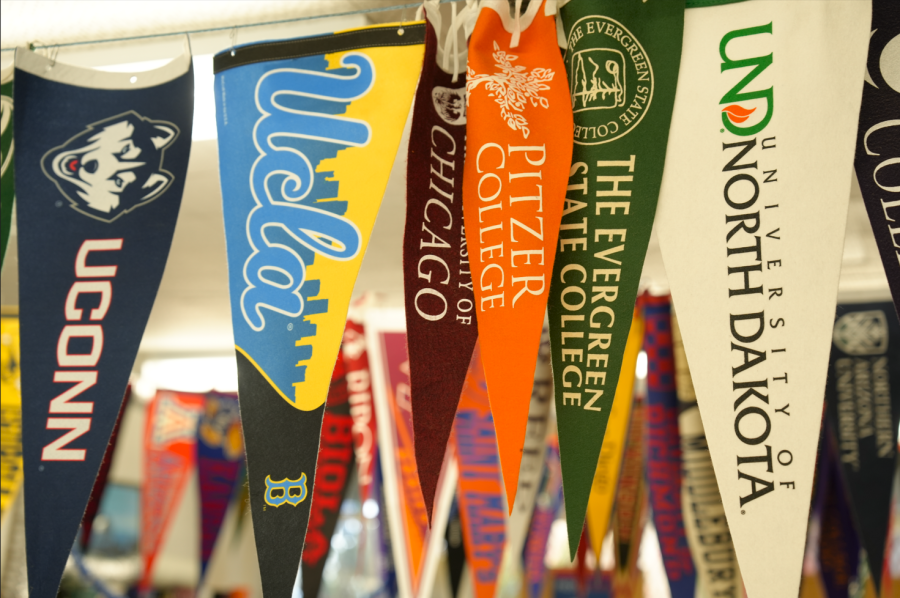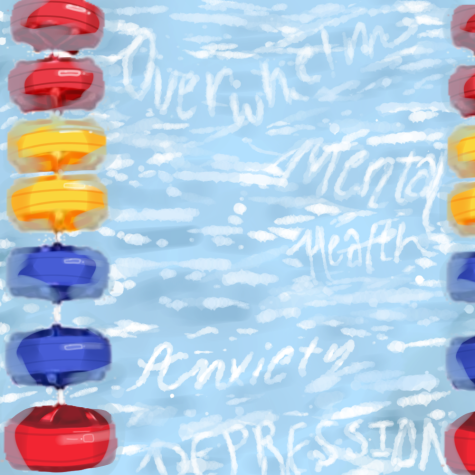A Letter to the Class of 2024 from the Class of 2023
Disclaimer: We are not experts of the college application process. The advice given in this article reflects the opinions of Tideline’s Class of 2023 and may not apply to everyone.
Dear Juniors,
Just a year ago, we were in your shoes — drowning in homework and crushed by the weight of AP exams, all while being expected to keep up with extracurricular activities, maintain a healthy sleep schedule and manage a social life because “you’re only in high school once,” right?
And of course, the looming presence of college applications doesn’t provide any sense of relief.
Although Pali’s College Center is available to answer general questions and give advice, we think that it might be helpful to provide perspectives from students who have recently gone through the college application process.
So, here are the tips and tricks we wish we had as second-semester juniors that we have since discovered during our turbulent journeys. Many of the challenges we encountered were due to a shortage of time, so we cannot stress our biggest piece of advice enough: do not procrastinate. We promise that anything you do to get ahead will help you in the long-run.
Nonetheless, it’s important to note this truth: While we encourage you to start as early as possible, we’ve seen many of our friends successfully complete this process, all at different start times and paces.
With that being said, when and where do you start? What is the most effective way to approach college applications? The process begins with letters of recommendation.
As you close out your junior year, maintaining your grades and continuing to build connections with your teachers is a great way to get ahead on your college applications. Establishing a tight-knit relationship with your teacher not only provides you with a supportive foundation in that class, but it also can lead to a strong letter of recommendation. It is best to ask two teachers (preferably one from a STEM class and one from humanities) for a recommendation by the end of your junior year. Many teachers limit the number of letters they write, so asking early ensures that you have your preferred teachers writing you letters. Unless they say otherwise, the teachers writing your letters of recommendation will most likely ask you to reconnect with them during the beginning of your senior year.
As you enter summer, it’s time to start constructing a college list, which, in our opinion, is the most enjoyable part of the application process. Based on your preferred campus size, location and available majors, your list is unique and should reflect your interests and desires for the next chapter of your educational career. Taking online campus tours and joining webinars is a free and easy way to familiarize yourself with the colleges to which you are considering applying. If you have the opportunity, visiting universities in person also gives you a further look into what your experience could look like on that campus. Your list should feature a spread of safeties, targets and reaches to give you the best chance of being accepted into multiple colleges. What qualifies as a safety, target or reach is highly dependent on an applicant’s test scores, grade-point average (GPA) and extracurricular activities.
Although it’s only 650 words, your personal statement requires a lot of TLC, so it’s best to start it during the summer. We can attest that this essay will undergo multiple revisions if you are lucky enough to avoid complete rewrites. Getting a head start over the summer will allow you to focus on your supplemental essays in the fall and give you enough time to polish your personal statement.
Lastly, though we know that this summer is extremely busy, starting the College Center’s Senior Activation Packet over the summer is critically important to stay on track in the application process. If you are planning on applying to schools with a deadline of Nov. 1 or earlier, the College Center requires you to turn in the packet by the end of August. This packet consists of a long list of questions about your personality and interests along with questions for your parents about you. The packet is submitted to the College Center along with a rough draft of one of your college essays and a resume of your extracurriculars. It is important to answer these questions to the best of your ability because the College Center will draw from your responses when writing your letter of recommendation.
To reduce stress, you should have completed a rough draft of your personal statement, the College Center’s list of questions included in the Senior Activation Packet and your college list by the time you walk onto campus as a senior. While you can continue to add and subtract colleges from your list as you write your supplementals and as your preferences change during the process, we recommend having a nearly complete college list by this point. This allows you to start your supplementals, which colleges typically release around Aug. 1. Writing supplementals is extremely time consuming, and it is prudent to get an early start so you don’t end up cramming days before the deadline.
With the start of the new school year, you should also follow up with the teachers writing your letters of recommendation to make sure you’re on the same page. If they have not already been given a form of some kind to fill out, you may want to ask if there is any information that they need in order to write the letter. Furthermore, you should confirm with the teachers that the letter will be completed before your first college deadline.
The first semester of your senior year is also the prime time to write your (many) supplemental essays. You will be doing a lot of writing, so it is a good idea to space it out. Set deadlines for yourself, and be sure to meet them. Luckily, many essays will have similar prompts, and you will be able to reuse them as a template for multiple colleges.
When filling out the Common Application, remember that the College Center is a great resource. Staff can help you with any of the more confusing questions about how to format your class schedule, account for extenuating circumstances, outline your extracurriculars. The extracurricular section on the Common Application is where colleges will understand what you do beyond the classroom, and it is important to use active verbs and include how you spend your time so that colleges can learn about an applicant with full information.
No one wants to spend their winter break swamped in college applications, stressed about finishing them before the early January deadlines. In our experiences, we applied to multiple schools under their Early Action timeline, meaning that the application is due on Nov. 1 and decisions are released by late January. The impact of applying early action is unclear, but it is important for juniors to keep in mind that colleges tend to fill up a majority of their freshman class with early action applicants. For many schools, this could mean the difference between an acceptance and a rejection. Applying early also ensures a relatively stress-free winter break.
Another timeline to apply under is Early Decision (ED). ED applications are due on Nov. 1, and decisions are released in mid-December. You can only ED to one college, and it’s contractually binding, meaning that if you get accepted by that school, you must attend unless the school is not able to meet your financial needs. For most schools, the ED acceptance rate is typically higher than their Regular Decision acceptance rates because a large portion of the freshman class is taken during the ED round. Colleges like to know that their applicants are excited about the school and are fully committed to attending, leading to them prioritizing ED applicants. That being said, it’s important to only ED to a college if you love the school and know you would thrive there.
To stay on top of your applications and their various due dates, creating spreadsheets is an effective organizational strategy. Spreadsheets can be a resource for not only comparing universities when determining where to apply (based on factors such as number of undergraduates, campus environment and acceptance rate), but also for outlining a schedule for completing essays and other application components.
After receiving your acceptance letters and deciding which university you will ultimately commit to, it is important to follow up with teachers and write thank you cards to your recommenders.
In the case of deferral after early rounds or waitlist after regular rounds, it is important to consider writing a letter of continued interest (LOCI). Before you do this, make sure to look up the school’s policies for LOCIs because some schools do not accept them, others have word limits and others strongly request them. The format for LOCIs can be found online but should generally update the admissions office on your accomplishments since you submitted your application, report any grade changes and thank the college for reviewing your application and keeping you in consideration for acceptance. It is also pertinent to express explicit details explaining how you will fit into the school and add to the community.
When the goal of the application process is to sum up your greatest accomplishments and academic achievements into a few essays and short responses, it is difficult to separate your self-worth from the process. College admissions can be ruthless and confusing. The criteria each college uses to select their incoming class varies, and rejection is not a reflection upon you or your future success.
We won’t tell you that getting rejected from your dream school is meant to be, or that it’s part of a bigger plan, but life will work out no matter what path you take after high school. There are many options outside of university, such as transferring, community college and not going to college at all. The rest of your life is not based on your success in the college admissions process. With that, we wish you luck with your college decisions, but don’t forget to enjoy your senior year. It goes by faster than you think!

Elsa O’Donnell joined Tideline as a sophomore and is now a senior at Pali. This year, she is excited to be an Editor-in-Chief and continue highlighting...

Sierra Sugarman joined Tideline as a freshman and is currently a senior at Pali High. This year, Sierra is excited to serve as Co-Editor-in-Chief and create...

Jacob Posner, a senior, joined the Tideline staff two years ago and is now a Co-Editor-in-Chief. He hopes to use journalism to improve his writing and...

Dohyun (Andy) Ju is a senior who joined Tideline three years ago as a freshman. He currently holds the position of Editor-in-Chief. Through Journalism,...

Katia Stutz, a senior at Pali High, started writing for the Tideline in her sophomore year and became Managing Editor in her junior year. Outside of school,...

Anirudh Chatterjee joined Tideline two years ago as a sophomore and is currently a features editor. Outside of school, he plays piano and violin. He also...

Coco Merritt is currently a senior at Pali, and is in her second year with Tideline. She has always loved journalism and is looking forward to being the...

Bianca Cherry, a senior, is the Tideline opinion editor. She loves writing for the publication because she is fascinated by the journalistic process. Outside...

Minnie Jellinek, a senior, is the Tideline copy editor, a job that is incredibly challenging in light of the fact her computer keyboard is irreparably...

Connor Rice is a current senior at Palisades Charter High School and a writer for the Tideline. In his spare time, he plays lacrosse, volunteers, and practices...

Dimitri Lykidis is a second-year staff writer for Tideline. He writes sports, feature and satire articles for the student-led publication. Moving forward, ...

Eleanor Gee is a senior at Pali and is in her first year at Tideline. She is president of the school film club and outside of school also enjoys baking,...

Emmett Heisen is currently a senior at Pali, and is in his first year with Tideline. He has always enjoyed writing and is excited to be a staff writer...

Alec Lam joined Tideline junior year and has taken charge ever since. He created the new infotainment announcement show called “The Leadership Show”,...












